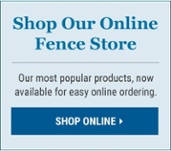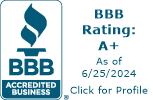Fences Make Good Neighbors, Or So They Say
Fascinated by the intricate dynamics of fences, which have been the focal point of my endeavors here at Louis Page, I have developed a profound interest in exploring the wisdom embedded within ancient proverbs. Among these venerable sayings, none resonates with me more deeply than the age-old adage that "fences make good neighbors." This succinct statement, steeped in the wisdom of generations past, has become ingrained in my consciousness, guiding my understanding of human relationships and boundaries.
It is intriguing to consider the insight offered by Miguel de Cervantes (1547-1616), the celebrated Spanish novelist, who eloquently described a proverb as "a short sentence based on long experience." Indeed, these timeless nuggets of wisdom, forged in the crucible of human experience, transcend the constraints of time and geography, offering profound insights that resonate across cultures and generations.
As I delved further into the significance of this proverb, my exploration led me to the works of Robert Frost, particularly his evocative poem "Mending Wall." In this literary masterpiece, Frost grapples with the complexities of boundary-setting, encapsulating the essence of human interaction and the inherent tensions between separation and connection. The passage that resonated with me most deeply reflects Frost's contemplation:
"Before I built a wall I’d ask to know
What I was walling in or walling out,
And to whom I was like to give offense."
These touching words serve as a poignant reminder of the importance of thoughtful introspection before erecting barriers, prompting us to consider the consequences of our actions and the impact they may have on those around us.
In reflecting on the wisdom contained within these words, I have found myself drawn into a deeper exploration of the nuances of human relationships and the role that boundaries play in shaping our interactions. Through literature, philosophy, and personal reflection, I continue to unravel the layers of meaning embedded within these timeless proverbs, seeking to glean insights that may illuminate my path forward in both professional and personal endeavors.
But perhaps this doesn’t interest you. You are only interested in your own fence and why you are erecting a fence in the first place.
And will it offend your neighbor? I have a friend who lives on an island off the coast of Maine and when he put up a fence in his front yard, people stopped to give him their two cents worth! Such as: “It’s ugly. “ People don’t fence in their front yard.” “It destroys your curb appeal.” Why didn’t you ask me before putting up a fence?”
Other thoughts about fences:
Your apple tree grows over my fence, do I get to reap the harvest on my side?
Your chook (chicken) went under my fence: you should have repaired my fence to keep out your chooks.
My tree came down on your fence, and it’s up to you to repair it.
Your cow broke through my fence. You should have your own fence for your cows.
And on and on.
Ultimately, the scenario of the apple tree overhanging the fence serves as a piquant reminder of the complexities of human relationships and the delicate balance between individual rights and communal responsibilities. It prompts us to consider how we navigate these boundaries with grace, respect, and a willingness to collaborate for the greater good.
To circle back around to the proverb, fences make good neighbors, fences can and likely should stop intrusion on our neighbor’s property, whether it’s an apple tree or a cow. Yes, fences make good neighbors, and as Benjamin Franklin said, “Love your neighbor, but don’t tear down your hedge.”
So what project are you working on? What’s the best fence for your project and how will it impact your neighbors? Naturally I think you should get it here.
My warmest regards
Debbie Page
CEO, Louis E. Page Inc–Woman-owned business and Family-owned since 1893. (Uh, that’d be thirteen-point-one decades owned and run by our family!)





